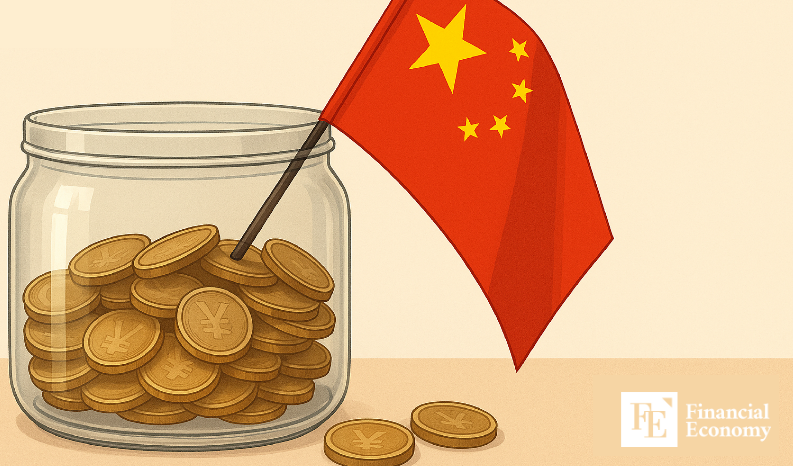With Confidence in Economic Growth, China's Premier Proclaims: "China Will Become a Major Consumer Powerhouse"
Input
Modified
Premier Li Qiang Pledges Stable Growth Boosting Domestic Consumption as Top Priority “Progress Toward Long-Term Goals, Not Short-Term Expansion”

Amid mounting concerns over China’s slowing economy, Premier Li Qiang has stepped forward with a confident message designed to calm both domestic and international audiences. Addressing challenges such as deflationary pressure, sluggish global demand, and turbulent trade conditions, Li reaffirmed China’s commitment to stable growth. But more than just a reassurance, Li’s message signals a fundamental economic shift: China aims to transform itself from a manufacturing-led, export-driven economy into a consumption-powered domestic market giant.
This is not just rhetoric. Behind Li’s words lies a sweeping government strategy focused on boosting internal demand to offset external volatility. From massive bond issuances and liquidity injections to consumption subsidies and emotional appeals to national pride, China is unleashing one of its most aggressive economic stimulus campaigns in recent memory. Yet, as the bold policies unfold, cracks in the foundation are already emerging, particularly over whether these measures are financially sustainable in the long run.
Beijing's Bold Push: Bonds, Liquidity, and Domestic Demand
Speaking at the World Economic Forum (WEF) in Tianjin, dubbed the "Summer Davos," Premier Li Qiang declared that China has both the confidence and the capability to sustain relatively rapid growth, even amid global uncertainties. He emphasized that China’s growth is not aimed at short-term expansion but is part of a longer-term strategic pivot toward a more sustainable and resilient economic model.
At the core of this transformation is a decisive shift away from heavy dependence on exports. Instead, Li outlined a blueprint where domestic consumption becomes a key growth driver. “China is not only striving to be a manufacturing powerhouse,” Li said, “but also aims to become a major consumer powerhouse.” This statement underscores Beijing’s intention to build a more self-reliant economy, less vulnerable to external shocks.
To back these ambitions with concrete action, the Chinese government has been pumping liquidity into the market since late 2023. The Ministry of Finance issued roughly USD 56 billion in special and ultra-long-term government bonds in April alone. Simultaneously, the People’s Bank of China (PBOC) supplied approximately USD 117 billion to the market through its one-year Medium-term Lending Facility (MLF). After accounting for USD 13.9 billion in maturing MLF loans, April’s net injection stood at approximately USD 98 billion, the most significant single-month liquidity infusion since December 2023.
This is only the initial wave. The government plans to issue an additional USD 255 billion in ultra-long-term special bonds, with maturities spanning 20, 30, and 50 years. The funds are earmarked specifically to support domestic demand. As Ming Ming, chief economist at CITIC Securities, explained, recapitalizing state-owned banks enhances their capacity to support the real economy. With an estimated eightfold leverage effect, a USD 69.8 billion capital injection could fuel as much as USD 558 billion in new lending to businesses and households.
A ‘Chinese New Deal’: Subsidies, Housing Relief, and Patriotic Spending
In addition to bond-driven stimulus, Beijing is pursuing what many are calling a “Chinese New Deal.” Much like Franklin D. Roosevelt’s programs during the Great Depression, the strategy focuses on bolstering consumer purchasing power and stimulating demand through direct financial incentives.
To stabilize the struggling housing market, the central government has loosened borrowing constraints for local governments and encouraged them to ramp up public investment. This has been accompanied by cuts in both the benchmark lending rate and mortgage rates, moves designed to lower borrowing costs for consumers and businesses alike.
One of the most prominent pillars of this consumer stimulus effort is the Yi Jiu Huan Xin (以旧换新) program, which offers generous subsidies for trading in old products for new ones. Covering a wide array of consumer goods, including household appliances, smartphones, digital devices, and automobiles, the program aims to revitalize consumption and accelerate economic turnover. Backed by a budget of about USD 57 billion, the initiative is being jointly managed by the National Development and Reform Commission (NDRC) and the Ministry of Finance.
This program isn’t simply an economic tool; it’s also an emotional appeal. Alongside financial incentives, Beijing is placing a strong emphasis on patriotic messaging. “Patriotic consumption” campaigns are being rolled out nationwide, encouraging citizens to favor domestic brands over foreign products. State media and social platforms are amplifying messages that frame buying Chinese-made goods not just as a personal choice, but as a civic duty. The broader goal is clear: to reduce dependence on global brands, strengthen the domestic manufacturing ecosystem, and anchor economic growth in the power of its own people’s wallets.

Cracks Beneath the Surface: Can the Strategy Hold?
Despite the bold design of China’s stimulus package, signs of strain are already emerging. The Yi Jiu Huan Xin subsidy program, initially intended to run nationwide through the end of the year, is rapidly depleting its funds. By the end of May, more than half of about USD 28 billion had already been depleted. The situation quickly worsened with the onset of the annual “618” online shopping festival, which alone burned through another USD 9.5 billion. Current estimates indicate that by the end of June, nearly 70% of the total subsidy budget will have been exhausted.
Compounding the issue are growing administrative hurdles. Several provinces, including Guangdong, have rushed to implement stricter rules to prevent fraud and abuse. Consumers are now required to register product serial numbers and provide proof of the return or recycling of old items to qualify for subsidies. In Jiangsu, authorities have instituted a "daily quota system," limiting the total amount of subsidies to USD 935,000 per day. Some regions have even transitioned part of the application process from online to offline to better control the influx of claims.
These moves are not without cause. Reports of subsidy abuse have become widespread. Fraudsters have been caught helping ineligible applicants, such as non-students, falsely obtain student-specific subsidies in exchange for kickbacks. Other schemes involve individuals purchasing heavily subsidized smartphones and reselling them at market rates for quick profits, pocketing tens to hundreds of US dollars per transaction.
All these developments raise a difficult question: Can China’s current strategy of stimulus-driven consumption growth truly hold? The country’s bold pivot to domestic demand is being tested not only by economic pressures but also by practical limitations in managing large-scale financial aid programs. While Premier Li Qiang’s confident rhetoric continues to project resilience, the rapid depletion of subsidy funds and the mounting need for tighter controls point to an underlying fragility in the model.
In the end, the success of China’s transformation into a major consumer powerhouse may depend on more than just liquidity injections and subsidy checks. It will require long-term structural reforms, renewed consumer confidence, and a sustainable fiscal strategy, none of which are guaranteed to be achieved. Whether Beijing can deliver on this grand economic reset remains one of the most critical questions for the global economy today.





















